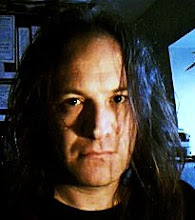els.where.ii
Hello again *. Glad the response helped; though it's a complex debate, as I previously said, and there are many issues within it, therefore. One has to start somewhere, though - so I think, and I originally hoped, that my analogy of figuration / narrative might function as one method of opening up a central structure of one possible debate on this subject, as I see it. I'm no real close-reader of the noise-artists you cite, sorry; so any comment I might offer would be general. There is, though, a certain 'listener transcendence' possible I think with exposure to pure noise - as opposed to, say, limited passages of same within, say, a rock structure: ie. King Crimson, The Fall. The danger here, in my view, is that that can tend toward escapism, zoning out; when, to my mind, the object is to zone in. There are different kinds of noise, of course - all giving off differing conceptual attitudes, allusions etc. Harmonic distortion, for example, can offer alternative forms of supposed beauty - insofar as one can eventually hear pleasing tonal qualities, melody and so forth; as one can see faces etc. in an abstract painting. This is an effect of the logicality of the brain, of course; as it makes sense of what might be intended non-sensically. Thus, that initial avant-gardist intention is rationalised, ratified, nullified, rendered aesthetic only. I called this decoration in my previous response; and, for me, that has a negative connotation. That is why, for me personally, there has to be some kind of connection to - in effect - language, the so-called 'real world'; this to say, there must be some kind of meaningful attempt to offer elements of understandable communication. In that way, one can offer a message which might convey useful ideas about the world, rather than offering an escape from same. An artistic commitment to the latter seems to be overtly recreational, to my mind; and that is the last thing I see art as. Best wishes, *


1 Comments:
ugg boots
michael kors outlet stores
celine bags
michael kors outlet
coach outlet store online
fitflops sale clearance
abercrombie and fitch
coach outlet
oakley sunglasses
kate spade handbags
louis vuitton outlet
coach outlet store online
ray ban outlet
ugg boots
pandora jewelry
uggs clearance sale outlet
oakley sunglasses
coach outlet
nike air max
michael kors outlet
uggs for men
ugg boots
fake oakleys
michael kors outlet clearance
ugg boots on sale
ray ban sunglasses
louis vuitton handbags
chanel handbags
air max 95
michaek kors handbags
ugg boots
jordans
louis vuitton handbags
20151229yuanyuan
Post a Comment
<< Home